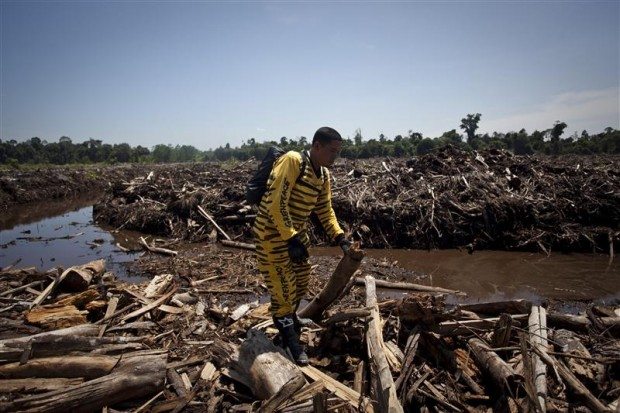Another blow has been delivered to the credibility of Asia Pulp and Paper (APP), thanks to some excellent work by WWF. In a survey of the certification bodies that APP regularly references to prop up its flimsy claims of sustainability, none of them would support APP’s assertions about its environmental performance.
In December, WWF and Indonesian organisation Eyes of the Forest released a report showing that APP’s suppliers were cutting down trees in APP’s own tiger sanctuary in Sumatra – a lack of joined-up thinking doesn’t even begin to cover that particular mess. It also stated that APP has no “independent, credible, third-party certification to demonstrate their sustainability”.
APP didn’t like this and responded with a press release (pdf), claiming that it is “regularly assessed and certified by many of the world’s leading authorities on sustainable forest management and environmental auditors”.
Several standard setting and certification bodies – including SGS and the world’s largest forest certification scheme PEFC – were cited as providing this reassurance but, as many people know from past experience, anything said by APP should be taken with a pinch of salt and thoroughly investigated.
So the WWF team decided to find out if any of the organisations mentioned by APP agreed that their assessments or certifications would back up APP’s actual sustainability claims. As it turns out, not a single one of them does.
While all the organisations named by APP have done work the company, all of it falls far short of the claims made.
So what are APP’s tricks of the trade? Firstly, there is what you might call ‘sustainability by association’. There are no PEFC-certified forests in Indonesia, but APP has the right to label some of its products with PEFC’s logo because it imports some PEFC fibre from South America and mixes it with uncertified fibre at its Indonesian mills. Then APP tries to imply that all its forest operations are assessed by PEFC.
As my colleague Andy explained in a previous blog, PEFC’s weak standards appear to allow APP to make these exaggerated environmental claims. So the question remains, why on earth is the world’s largest forest certification scheme allowing APP to use its name as a fig leaf to cover up its gross environmental destruction?
As well as ‘sustainability by association’, the company takes the fact that some of its plantation operations have been audited to a basic standard of legality and then tries to imply that this makes them all sustainable, when legality and sustainability are two very different things. Responding to the WWF survey, SGS stated that “none of the … evaluations conducted by SGS … provide the company with the right to claim that their operations are ‘sustainable forest management’.
The results of WWF’s survey are extremely significant. APP uses the names of these certification bodies and auditors to persuade its customers that it has nothing to do with the destruction of Indonesia’s rainforests. We’ve even seen letters sent to its customers that come across as slightly pleading: “If you still have doubts… why does APP regularly pass rigorous audits which are conducted by many of the world’s leading authorities on responsible forest management?”
It’s not working though and just last week a plethora of retailers in the US said they won’t stock APP’s tissue paper.
Now their certification providers have distanced themselves from APP’s inaccurate statements. What will APP use for a fig leaf now?



